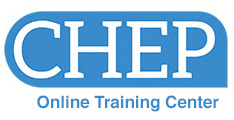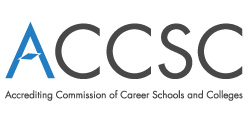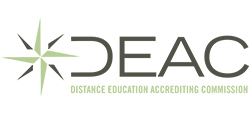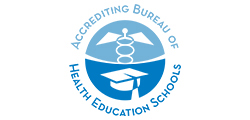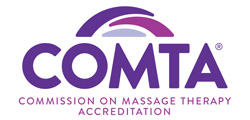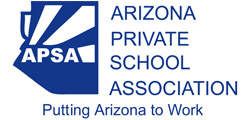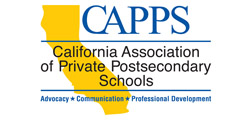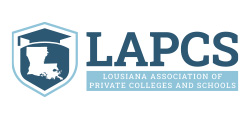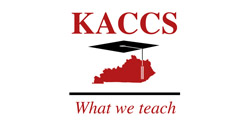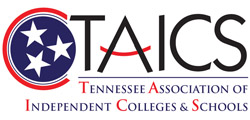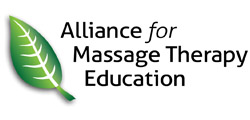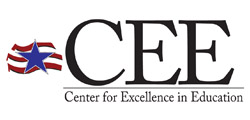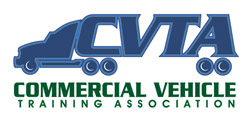Badge Evidence | Completed Courses (4 Hours Each)
ABHES101Developing a Program Effectiveness Plan (PEP)
The health care field is growing rapidly, as are the requirements for preparing individuals to enter and be successful in their chosen health care fields. To remain current with the demands of career preparation areas, colleges and universities need to have a plan of action to assess the status of programs and strategies for improving instructional offerings. This course will provide participants with a step-by-step process to complete an internal program quality assessment tool called the Program Effectiveness Plan (PEP). Resources are provided that will expand the knowledge base of participants and assist them in completing a PEP.
This course is sponsored by
Accrediting Bureau of Health Education Schools
Accrediting Bureau of Health Education Schools
ACCSC101Fulfilling the Standards of Accreditation: Administration
This course "pulls back the curtain" for schools to help them better understand the principles and purposes of the ACCSC Standards of Accreditation. ACCSC101, along with the accompanying course ACCSC102, lays out the standards in line with the way schools are typically structured to better help you comprehend the important relationship between each standard and each aspect of running a compliant, accredited school. This course addresses the standards on the administrative side of your school, such as standards that relate to operations, admissions, and financial aid.
ACCSC102Fulfilling the Standards of Accreditation: Academics
This course focuses on the ACCSC Standards of Accreditation which directly tie to the academic areas and program requirements for an accredited school. The course includes information on program development and design, educational policies and procedures, faculty, student services, and educational delivery methods.
CS101Setting Up an Effective Career Services Department
This course offers strategies to provide employment and job search skills training that enables students to seek jobs in the field for which they are trained. You'll learn how to offer comprehensive career services regardless of whether your career services department is staffed full- or part-time. The course provides strategies for an institution to set up a Career Services Department, enhance and run it, and measure results. It describes how a successful career services department can ensure that your students have the skills and self-confidence to succeed in the workplace. You'll learn techniques to increase placement rates and reach out to the community to meet and maintain relationships with hiring decision-makers.
CS102Empowering Students to Find and Secure the Right Job
In this course, you will be given tools to help your students find the job that's right for them, present themselves impressively on paper, and interview with ease. This course is designed so you can successfully support your students in four phases of their job search: doing a targeted job search, writing a powerful resume and cover letter, presenting professionally, and developing effective interview skills.
CS119Teaching Modern Job Search Strategies
With new recruiting technologies, increasingly selective hiring practices, and the prevalence of remote work, it's clear that job searching has fundamentally changed over the years. Yet outdated and ineffective job search methods persist. Career educators and workforce development professionals must be equipped with the latest knowledge and techniques to help learners navigate a modern, competitive job search landscape.
This course provides a structured, practical approach to helping learners develop the skills needed to execute an effective job search strategy while building resilience in the process.
CS120Interviewing 101
Help students ace the interview with successful tactics to showcase their qualities and make them the best fit for the job. A career management specialist will be able to master the appropriate actions for students to take before, during, and after the interview. These tactics can then be implemented in a career management class or during the preparations for prospective job interviews. The goal of this course is to help develop a better understanding of the topic and produce tangible resources to help implement plans, strategies, and ideas at your school. In addition to lecture videos, resource links, and assessments, you will be able to utilize Journal and Learning Activities, which will continue to be useful after successful completion of the course.
CS201Institutional Best Practices to Maximize Graduate Employment Outcomes
Derived from the feedback of over 100 institutions, empirical research, and case studies, course participants are presented with specific strategies and best practices that promote graduate employment. This course is for all education professionals seeking to understand the institutional practices that maximize graduate employment outcomes. Because employment outcomes are as much a function of institutional behaviors as they are of student behaviors, this course is based in systems thinking, which challenges participants to examine the interdependent relationship among institutional infrastructure, student career-readiness, and graduate employment rates.
CS202Best Practices in Graduate Employment Verification & Documentation
Accurate representation of graduate outcomes is critical to upholding institutional integrity. All involved in employment reporting must continuously identify ways to strengthen their system for tracking, collecting, and verifying employment data. When documentation is both a quality and a compliance matter, staff must understand the verification program as a whole, the role they play in continuously improving it, and how to use professional principles and best practices in documentation. This course is designed to encourage participants to critically analyze their own employment reporting practices while sharing ideas and best practices that can help lead to the highest level of data integrity.
EC115Integrating Career Readiness Into Your Courses: Part I
This course will provide an overview of career readiness including information and activities that may be incorporated into your courses. This course, which forms Part I of a two-part series, provides details about four specific career readiness skills: critical thinking/problem solving, verbal/written communications, teamwork/collaboration, and information technology applications. Additional thoughts and resources will also be provided to allow you to consider multiple ways to assist students in developing these skills in your courses.
EC116Integrating Career Readiness Into Your Courses: Part II
This course will provide a brief review of career readiness and provide additional skills to incorporate into your courses. This course is Part II of a two (2) part series of courses. Therefore, this course will provide details about four (4) additional specific career readiness skills. These skills include leadership, professionalism/work ethic, career management, and global/multicultural fluency. Further thoughts and resources will also be provided to allow instructors to consider additional ways to incorporate these skills into their courses.
ED101Effective Teaching Strategies
This introductory course covers the essential roles of a teacher and the competencies required to be a successful instructor in an educational institution. Proven techniques and strategies for planning and preparation are presented and discussed. In addition, the course offers effective methods for conducting the first class meeting and delivering course content. This course provides a solid foundation for new instructors and serves as an excellent refresher for more experienced instructors.
ED102Student Retention Methods
The instructor is the real key to student retention at any educational institution. Instructors must keep focused on student motivation and retention each and every day of class. Developing strategies for retaining students throughout the entire training sequence is both complex and rewarding. All instructors should have the goal of seeing all of their students successfully complete their class. This course helps you reach that goal by helping you to understand your students and use proven motivation and retention techniques to keep them enrolled and engaged in the learning process.
ED103Student Learning and Assessment
Educators work with students who want to learn specific skills that will lead to fulfilling careers. As educational instructors it is our job to help each student to achieve this goal. Just as you may have a particular style of teaching that you prefer, your students have preferred ways of learning. This course will help you to identify the different learning styles of your students so that you can adjust your instruction to better accommodate them. Good teachers also regularly monitor the effectiveness of their instruction by assessing their students’ learning. This course will examine several aspects of assessment including how to create good tests, how to ask effective questions and how to get your students to actively participate in their learning by asking questions themselves.
ED104Class Management Strategies
This course provides methods and techniques for managing students and class activities. We start by reviewing the steps instructors need to follow as they introduce a class to new students. We then discuss strategies to effectively deal with unfocused and challenging students. The course ends by describing common mistakes made by instructors and ways to avoid them.
ED105Instructional Planning for Student Success
This course shows instructors how to develop a comprehensive approach to effective and efficient instruction. From preparation for the classroom to selection of instructional delivery methods, the course provides effective ways of planning instruction to help instructors keep the content focused and the students engaged. We also cover the steps to set up a complete evaluation system that will work in all settings.
ED106Enhancing Student Learning
This course provides methodologies and examples to help instructors increase content retention and application by students in need of support. The course starts by covering the skills needed by instructors to be clear communicators. We then discuss ways instructors can become effective in monitoring students and using student groups as learning tools. The course concludes by covering techniques and strategies to instruct diverse learners, including learners with disabilities.
ED112Influencing Student Motivation
This course is intended to offer a practical explanation of how an instructor’s behaviors and choices can influence the motivation of students. It is not intended to be a theoretical or academic treatise about motivation. Module 1 offers useful tips that may help instructors to motivate students. Students’ security and autonomy are described as they influence motivation during instruction, questioning, activities, and evaluations. This is followed by a discussion of how motivation can be improved by enhancing students' sense of autonomy when making assignments, selecting instructional methods, implementing classroom procedures, and developing evaluations. In Module 2, intrinsic and extrinsic motivators are defined and compared. Finally, a variety of "miscellaneous motivators" are offered for instructors to consider.
ED115RSoft Skills for Instructors
This survey course provides an introductory discussion about how good soft skills help instructors to be successful. A distinction is made between hard skills, soft skills, people skills, and workplace behaviors. Selected soft skills are listed for various categories of businesses and industries, including the teaching profession. Two studies are referenced that highlight skills that are frequently cited in the literature. One study was published in 1997, while the other was conducted specifically for this course in 2024. Selected tips are offered for improving one's soft skills. Numerous hyperlinks are included that direct the reader to a variety of online enrichment materials, including a few online instruments that help individuals learn more about their own soft skills.
ED124Flipping Your Classroom
This course will provide you with a basic overview of the background of an innovative instructional strategy called the Flipped Classroom. This instructional strategy is gaining popularity and differs from traditional instructional strategies. This course will discuss the background, driving factors, benefits, barriers, theoretical grounding, how to prepare to flip your classroom, and the components of the Flipped Classroom. The impact on student learning will also be discussed in addition to instructor preparation and the future of the Flipped Classroom.
ED126Integrating Technology into Education
While educators increasingly use technology in the lab setting, many don't know where to start when trying to use it during didactic instruction. Furthermore, administrators have a hard time rolling out these initiatives. This course will go through the stages of a solid rollout plan to take advantage of available technologies. It will also discuss how to teach with technology as an enhancement to education, not a replacement. This course helps instructors, administrators and support staff to better understand how to use these tools.
ED405Essential Teaching Strategies
This course emphasizes teaching strategies that can be implemented within different types of lessons to promote teacher proficiency, student motivation, and achievable outcomes. Topics relating to teaching methods include direct, indirect, interactive, and independent instruction. By utilizing various teaching strategies and methods, an instructor can approach teaching topics in a variety of ways. The goal of this course is to help develop a better understanding of essential teaching strategies, and produce tangible resources to help implement plans, strategies, and ideas at your institution. In addition to lecture videos, resource links, and assessments, you will be able to utilize Journal and Learning Activities, which will continue to be useful after successful completion of the course.
ED409Gamification in the Classroom
This course will explore the field of gamification and the way that gaming and gaming elements have come to impact our everyday lives, and can improve our courses. Focusing on easy-to-implement concepts, this course will help you to begin utilizing gamification elements to increase learner engagement and motivation, and increase overall student success.
The goal of this course is to help develop a better understanding of the topic and produce tangible resources to help implement plans, strategies, and ideas at your school. In addition to lecture videos, possible resource links, and assessments, you will be able to utilize the Journal and Learning Activities.
EL101Designing and Developing Online Courses
This introductory course will provide you with the knowledge and skills to create successful online courses, whether for faculty-supported distance education delivery or as a supplement to classroom instruction. You will learn to design and develop online courses that have structural integrity and navigational simplicity with a focus on student-centered learning and intellectual interaction. The course covers various learning activities that are supported in an e-learning environment and describes the typical components of an online course. We will provide you with the media strategies and course design methodologies that will allow you to develop online courses in an effective and efficient manner.
EL102Online Teaching Techniques
Your degree of success as an online instructor relies heavily on several factors, among which are your level of preparedness before the date on which the course is launched; your ability to make a smooth transition into the roles and responsibilities associated with teaching in an online environment; and the effectiveness and efficiency with which you manage learners, instructional transactions embedded in the course as well as the learning environment. In this course, you will learn how to project your authority and presence into the e-learning environment, build a relationship with each learner, promote and nurture learner participation, provide informative and constructive feedback in a timely manner, minimize attrition, manage communications, manage unacceptable behavior and resolve disagreements.
EL103RTeaching Online: A Student-Centered Approach
This course will provide you with the knowledge and skills to successfully author, teach, assess, and revise online courses. You will learn to develop a course framework with consistent modules. Building an online community and constructing a dynamic syllabus are important in helping you communicate with students. You will also learn how to develop an assessment plan that includes peer and self-assessment. No online course is complete without a comprehensive revision cycle. This course will walk you through the process of "closing the loop" to create a complete revision and improvement plan for your online course. We will provide you with ideas for student-centered learning that includes activities and intellectual interactions using a variety of technological tools.
EL104Teaching and Organizing a Virtual Learning Environment
This course will provide you with basic information to teach in a virtual learning environment and understand the importance of organizing course content. You will learn about the important role technology tools play in teaching and organizing an online course. You will also learn the difference between synchronous and asynchronous learning. As the components of each are discussed, you will further identify appropriate methods, develop guidelines, organize content, and establish a pattern of teaching for each method.
EL105ROnline Language: Communicating with Students
This course provides information to help you effectively communicate with students and encourage communication among students in an online environment. You will learn the importance of facilitating instructor-to-student (I2S), student-to-instructor (S2I), and student-to-student (S2S) communication. Digital technology tools play a vital role in the modern communication process, and several are discussed in this course. In addition, discussion is provided to help you further understand how to manage and measure communication in an online course and help students communicate effectively.
EL106Evaluating Student Learning in Online Courses
This course will provide you with the knowledge to effectively evaluate student learning in an online environment. Technology tools play a vital role in the evaluation process and several are discussed in this module. Discussion will also be provided to help you further understand how to complete formative and summative assessments, as well as the advantages and disadvantages of objective and subjective assessments. Value-added assessments are also discussed in light of how they can be completed and provide feedback for course revision.
EL107RDesigning Dynamic and Technology-Rich Learning Environments
This course outlines the main characteristics of "dynamic" course design for blended instruction and highlights effective teaching methods that facilitate the learning process. Participants in this course will be able to customize the design principles and methods presented here to suit their individual professional context.
EL108Preparing Students to Become Good Online Learners
This course will provide you with strategies and techniques to help prepare students for the online environment. To do so, you must also assess your strengths and weaknesses as an online instructor. As you help students assess their readiness for online learning, you are also preparing them for the expectations and realities of the online environment. By identifying students' strengths and weaknesses, you can provide guidance to help them achieve the learning outcomes. This course not only notes the necessary technical skills, it also discusses non-technical skills as well as techniques for successful learning and helping students develop their online persona.
EL109Using Rubrics to Enhance Online Learning
This course will inform you about the purpose of rubrics and will provide you with the techniques to develop rubrics as an assessment tool for student performance, processes and products. This course will explore types of rubrics, the role rubrics play in assessment, as well as the use of rubrics in evaluating elements of your online course to ensure your course is truly student-centered.
EL111Assistive Technologies for the Online Learner
This course will provide you with the basic foundations of assistive technology and its use in the online learning environment. As a greater number of students with disabilities are entering online education, this course will prepare online faculty to meet their unique needs. You will learn about the obligations and legal responsibilities under U.S. federal law. In addition you will explore ways of assisting students with disabilities to succeed in the online learning environment. We will help you identify the appropriate tools, introduce you to universal design, and provide strategies that can make your online course accessible to those with disabilities. Online accessibility is beneficial to all of your learners!
EL141Engaging Online Learners
This course will explore the online learning landscape and how to ensure learner engagement remains high, even when working virtually. The course discusses various aspects of online education, as well as discussing techniques for both social and motivational forms of engagement and how to apply them appropriately in courses.
The goal of this course is to help develop a better understanding of the topic and produce tangible resources to help implement plans, strategies, and ideas at your school. In addition to lecture videos, links to possible resources, and assessments, you will be able to utilize the Journal and Learning Activities. Take advantage of a method that best works for you.
EL142Effective Online Assessments
Assessments are a vital part of the learning process. They allow students and teachers to see how well they are doing and what needs to be improved upon. When offering online assessments, it is sometimes difficult to develop effective methods due to the new digital learning landscape, experience level with online teaching, or with tweaking on-ground assessments to create an effective online form.
In this course, students will identify the impacts and opportunities that online assessments have in the digital learning process, discover the challenges that can present themselves and the strategies to overcome them, and evaluate guidelines for crafting effective assessment opportunities in an online course.
LS101RDo You Manage Or Lead?
This course explores the critical differences between management and leadership. Participants will be introduced to definitions and myths about each area as well as how management and leadership must coexist for an organization to operate effectively. Participants will explore their own management/leadership tendencies through exercises to see leadership and management in action.
LS102How Do You Lead?
Not everyone is suited for, or desires, a leadership position. One of the first steps to being an effective leader is to understand the desire to lead in the first place. Participants will explore their motivation to lead and develop a deeper understanding of their leader style(s).
LS103RYour Leadership Impact
To improve your impact and effectiveness as a leader, you must not only understand the role of a leader, but you must also take into consideration the followers and the situation. This course defines leadership impact and explores the interactional framework for leadership.
LS104RYour Leadership Legacy
The higher education industry provides a wealth of opportunities and challenges for those seeking leadership positions. In this course, participants will gain a deeper understanding of the higher education sector and themselves. The importance of higher education institutions will be explored along with developing a personal leadership legacy.
LS105RYour Leadership Toolkit
Get ready to add a number of skills to your toolkit as you develop as a leader! This course focuses on increased self-awareness in communication styles and learning; developing deeper understanding through empathic listening; and motivating through innovation.
LS106This Way to Leadership
This course provides you with a framework to put your self-discovery and learning into a workable plan to further develop your leadership skills. A step-by-step process is offered to help you create a meaningful Personal Leadership Development Plan (PLDP) complete with the development of SMART Goals and advice from some of today's leaders in the higher education sector.
ML111Leading and Motivating
This course provides a synopsis of the essential tasks of leadership setting direction, aligning people, and motivating others. You will learn how to recognize the skills and characteristics of effective leaders, create an inspiring vision, and energize people to support and work toward your goals.
ML113Team Management
Focus is essential to effective teamwork. In this course, you learn how to diagnose and overcome common problems - such as poor communication and interpersonal conflict - that can impede team progress. You will also learn to take corrective measures to remove team problems and improve team performance.
ML114Meeting Management
This course provides a timesaving guide to planning and conducting meetings from start to finish. It covers preparation, keeping the meeting on track, and follow-up. The course also offers expert advice for dealing with problem behaviors exhibited by meeting participants.
OP106Developing New Programs: Research and Selection
Educational institutions need to be aware of emerging employment opportunities in new and expanding fields if they are going to continue to attract students. Most licensing and accrediting agencies ask an institution for some form of feasibility study when submitting new program-add applications. The research involved in this step often requires proof of need for the program, number of anticipated job openings, and input from employers. This course outlines ways to collect data to make an effective decision and show regulatory agencies proof of employment opportunities. Step-by-step directions are included to assist institution staff in conducting effective research and preparation of curriculum to meet employer specifications.
OP115RHiring the Right Faculty for Your Institution
This course shows you how to hire high-quality instructors and orient them to your institution. The skills also apply to hiring staff. It's easy to hire someone to do a job. But it can be difficult to hire the right person. You want instructors who are top notch. They represent your institution and interact with the most people at your campus and particularly your students. This course starts with how to determine exactly what type of people you need as your instructors. Then it shows you how to recruit and hire them. Once hired, you'll learn how to introduce them to the working environment at your institution. By the time you finish this course, you'll be recruiting, hiring, and orienting quality instructors. You'll see results in improved enrollments, student achievement, retention, and completion.
OP121Managing Online Faculty at a Distance
It is no longer news that predictive learning analytics are changing online classroom instruction. This course teaches current trends in locating, hiring, monitoring and retaining the best professionals that specialize in online instruction. More importantly, this course provides insights for using the new predictive analytic approaches to optimize management of online faculty. Generalized "best practices" are waning in favor of real-time monitoring for individualized qualitative and quantitative analyses. This real-time approach provides significantly increased student success and retention. Also addressed in the course is how to build a strong faculty management team, continuing faculty development recommendations and various business considerations.





